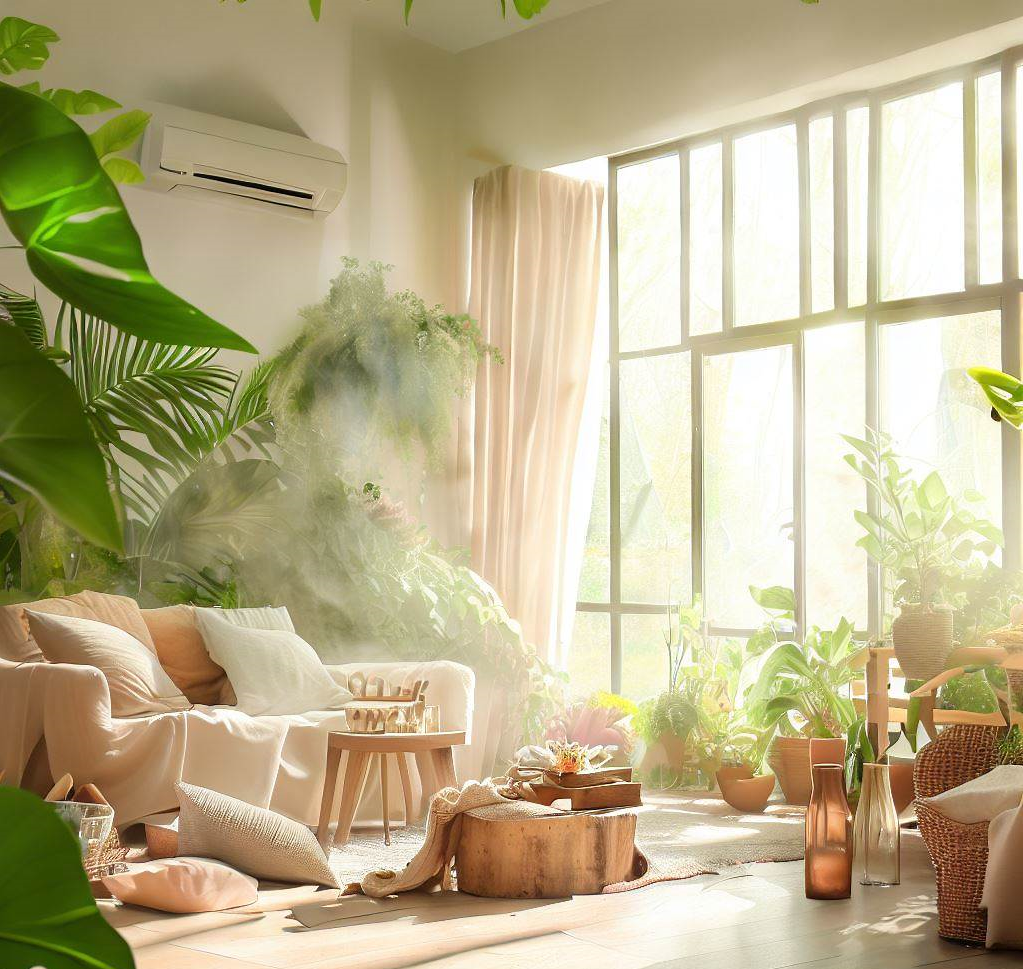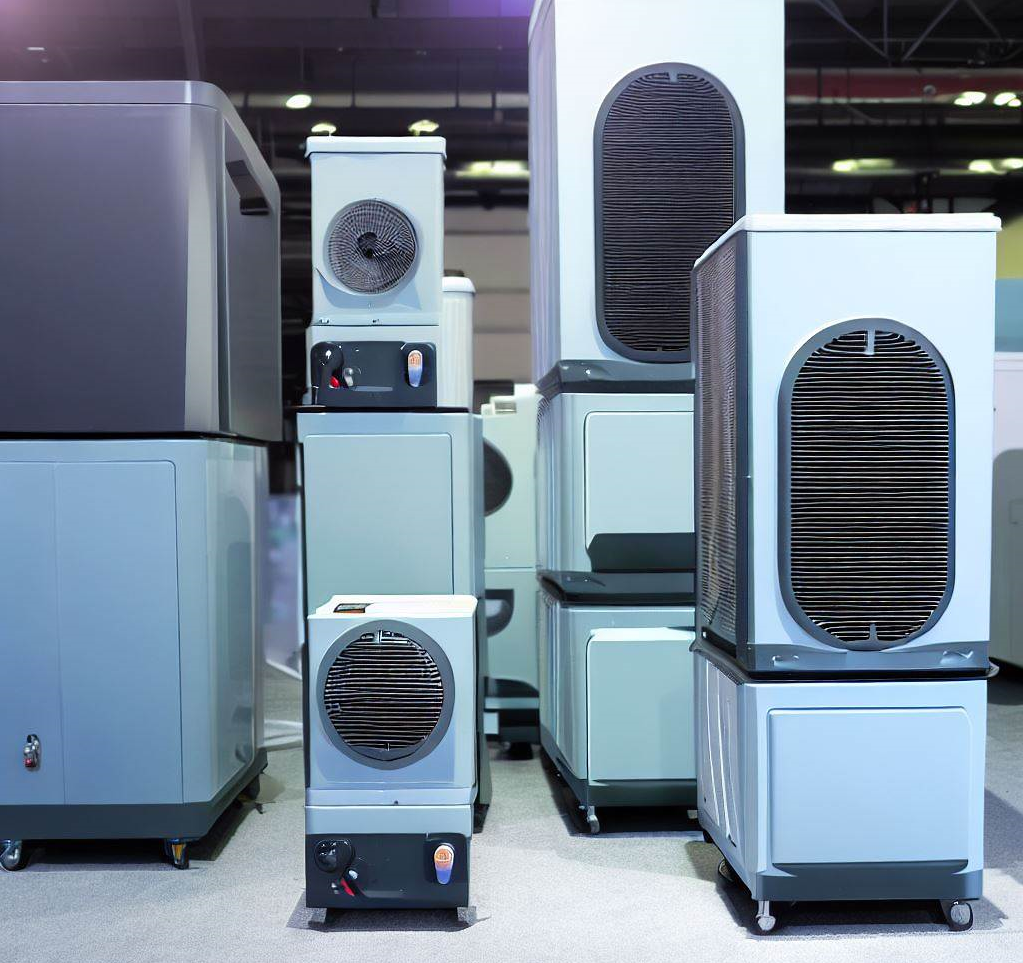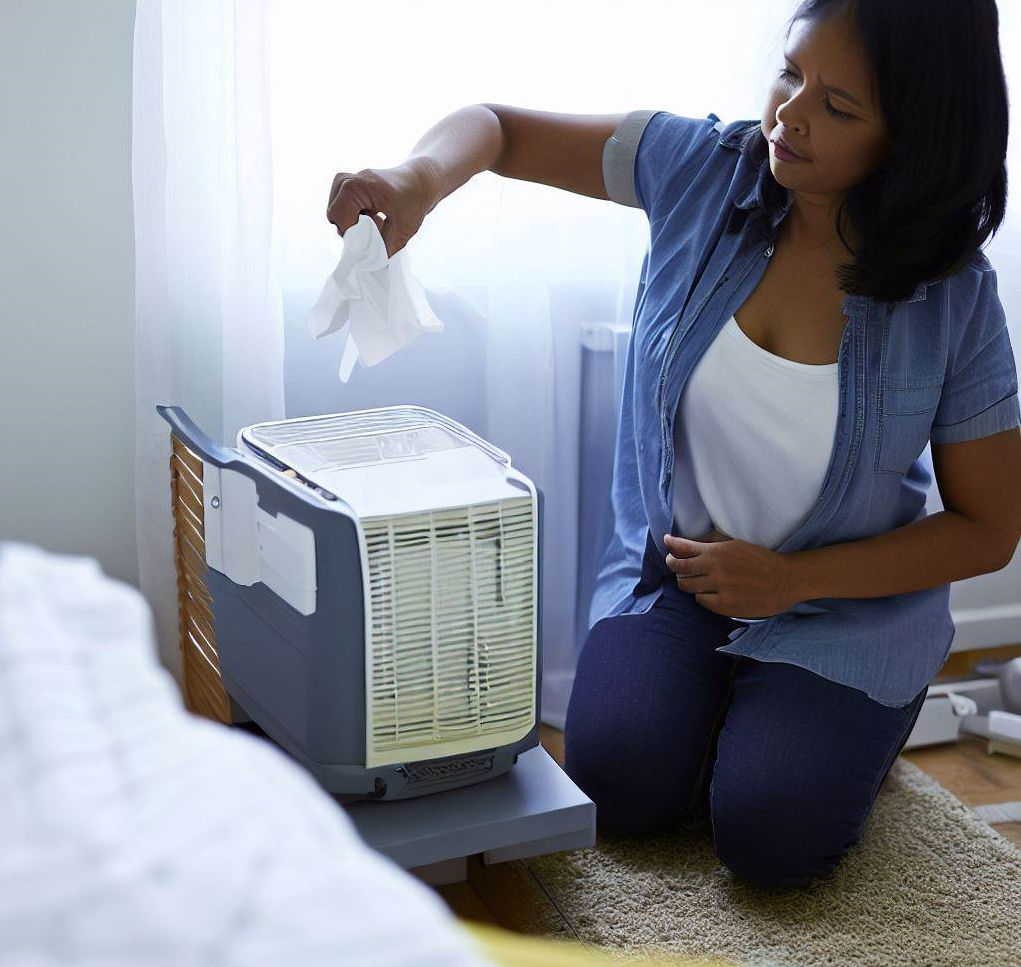Humidity in your home can be a real problem if left unchecked, leading to an uncomfortable environment and even mould or mildew growth. Fortunately, using a dehumidifier is one effective way to reduce humidity levels and maintain comfortable living conditions. This article will look at using a dehumidifier effectively for maximum efficiency and long-term results.
With the right approach, you don’t have to accept high humidity levels in your home – there are steps you can take to gain control over it. By understanding the basics of dehumidification technology, you’ll be able to make sure that your space stays healthy and free from excess moisture. I will give you some tips on how to get the most out of your dehumidifier so that you’re always prepared for any humid climate.
Ultimately, having control over the air quality within our four walls gives us all peace of mind knowing our homes will remain safe and comfortable environments no matter what mother nature throws at us! So let’s dive into how you should utilise this amazing tool so that you never have another overly humid day again!
Definition Of A Dehumidifier

A dehumidifier is an appliance that reduces the amount of moisture in the air. Around 70% of UK homes suffer from humidity above 50%, according to a recent study by the Environmental Protection Agency. High humidity can cause various problems, including mould growth and paint damage. A dehumidifier helps reduce these issues by absorbing excess moisture from indoor spaces.
It’s important to understand how a dehumidifier works before using one. The device draws warm, humid air over cold coils, which cools it down until condensation forms on the coils’ surface. The resulting water droplets are then collected and stored in a tank or drained away via tubing before returning dryer air into the room.
By understanding how this machine works, you can use it more effectively and reap its many benefits. You’ll also gain greater control over your environment – something we crave unconsciously!
Benefits Of Using A Dehumidifier

The benefits of using a dehumidifier are many and varied. It can help you maintain the right humidity level in your home, office or laundry. This is important for comfort and health, as too much moisture can lead to mould growth which can cause serious respiratory issues. You can also reduce dust mites and other allergens that thrive in damp environments by reducing indoor humidity levels.
On top of these factors, there’s also the fact that proper use of a dehumidifier will result in improved air quality throughout your space. By removing excess water vapour from the air, a dehumidifier ensures better odour control and helps prevent airborne illnesses like asthma and allergies. It also reduces static electricity buildup, making it easier to move around without getting shocked!
Finally, using a dehumidifier correctly will save money on energy bills since dryer air requires less cooling or heating than humid air. You’ll be able to keep your environment comfortable while cutting down on energy costs – an excellent combination for anyone looking to take greater control over their living situation!
With all these advantages, it’s clear why investing in a good-quality dehumidifier makes sense if you’re looking to improve your home or office environment. Choosing the right size model is key, though; let’s look at some tips for doing just that now.
How To Choose The Right Size Dehumidifier

Humidity levels inside the home can significantly affect health, comfort and even appliances. Choosing the right size dehumidifier ensures your space remains comfortable and free of excess moisture. Here are some tips for selecting the correct unit for your needs:
First, you should measure the area where you plan to install the dehumidifier. Knowing its square footage will help determine the capacity best suits your environment. The higher the humidity level in your room, the larger the capacity unit you’ll need. If there is no data about how humid it is, consider investing in an affordable hygrometer. This device measures indoor relative humidity levels so you know exactly how much moisture is in the air.
Second, consider whether you’ll be using multiple rooms or areas at once with one single machine or if each space requires a separate unit. Multiple machines might mean needing fewer overall amps but more physical units, while one large unit could require more power but fewer devices cluttering up various spaces within your home.
Thirdly, look at energy efficiency ratings when choosing a dehumidifier, as they can vary significantly from one model to another – plus, they might save you money over time! A good rule of thumb would be to pick something around Energy Star rated, ensuring that you won’t waste energy unnecessarily whilst still getting great performance out of your appliance.
So now that we’ve gone through how to choose the right size dehumidifier let’s explore the different types of models available.
Types Of Dehumidifiers
Now that you understand what size dehumidifier is right for your space, it’s time to look at the types of available dehumidifiers. There are two main types: refrigerant and desiccant. Refrigerant models cool air passing through a compressor while also removing humidity from the air. Desiccant units use absorbent materials like silica gel or zeolite to remove moisture. Both work effectively, but each has its advantages and disadvantages.
Refrigerants are usually more expensive than their desiccant counterparts. Still, they tend to be more efficient when dealing with larger areas because they have higher capacity levels and don’t require frequent emptying of water tanks. On the other hand, some find them noisier than desiccants due to the running motor and compressor inside these machines.
Desiccants are generally cheaper than refrigerant systems and much quieter in operation since there are no moving parts involved in most models.
They can successfully reduce humidity even in cooler temperatures without affecting room temperature; however, they need regular maintenance, such as cleaning out the filter frequently so it doesn’t get clogged up with dust particles that could affect performance over time. In addition, they don’t handle large spaces well since they typically have lower capacity levels than refrigerants.
With both types of dehumidifiers now understood, let us discuss how positioning and placement will ensure optimal performance throughout your home environment.
Positioning And Placement Of The Dehumidifier
Positioning a dehumidifier is like painting a masterpiece: it requires careful consideration and thought. It must be placed in the most humid area to ensure maximum efficacy. This can be achieved by placing hygrometers throughout the space and closely monitoring their readings – this will help you identify where the room’s ‘hot spots’ are located.
It should also be placed on a level surface away from any sources of heat or cold air drafts, as these can impact its performance. Additionally, if your model comes with caster wheels, ensure they are locked into place before use; otherwise, you may find yourself chasing after them! The unit must not come into contact with water or other liquids either – so keep it at least 12 inches away from sinks, tubs and showers.
Finally, leave some breathing room around the device for adequate ventilation. If furniture or walls block too much space, its ability to suck up moisture diminishes, leaving you with subpar results. With proper positioning and placement of your dehumidifier, you’ll have complete control over your indoor environment in no time! Now let’s look at what ventilation requirements must be met for effective use.
Ventilation Requirements For Effective Use
Once you have the dehumidifier in a suitable position and plugged into an outlet, it’s time to ensure the device can function as intended. Ventilation is essential for properly operating your dehumidifier: air must pass through the evaporator coil, where condensation can occur, and moisture can be extracted from it. If this process isn’t happening efficiently enough, the appliance won’t perform its job properly.
The first step is to ensure that there are no obstructions near or around the unit itself; furniture, curtains, bedding, etc., should all be kept away from it so that airflow remains unimpeded. The second step is to check if any windows or doors leading directly outside are open while the machine is running. This will allow fresh dry air to draw inside and replace dampness-laden indoor air drawn by the dehumidifier. Both processes must work together for maximum efficiency.
Finally, consider using fans with your dehumidifier when possible; these can help circulate air within a room more quickly than normal ventilation methods would otherwise do. Doing this helps create an environment where humidity levels decrease much quicker than without such assistance, meaning your home becomes drier and stays comfortable longer. With the right setup, you’ll soon be ready to set up a humidity level tailored specifically to your space’s unique needs!
Setting Up A Humidity Level
Once you have decided to use a dehumidifier, setting up the right humidity level is essential. Picture yourself in a warm room with stale air and condensation forming on surfaces; this is an example of too much moisture in your environment. Now imagine yourself entering a dry room that’s comfortable to stay in – it feels like there’s just enough moisture without becoming uncomfortable or stuffy. This is how the perfect humidity should feel – not too wet or dry.
To get started, set the control knob of your dehumidifier to the desired relative humidity (RH) level for your space. The ideal RH range for most indoor spaces is between 40-50%, but if you live in more humid climates, consider lowering it further to 30%. It’s important to remember that all settings are relative depending on where you are located geographically and during different times of the year, so adjust accordingly. Additionally, check your manufacturer guidelines, as some appliances may require higher or lower settings than others for optimal performance.
It can also be helpful to monitor changes in temperature and humidity over time, so purchase a hygrometer which will accurately track these levels 24/7. With such data, you can make better decisions regarding when and how often to run your appliance based on actual conditions inside your home rather than guesswork alone. This way, you’ll know what works best for you while maintaining healthy air quality throughout any season! From here, we’ll look into choosing the right features for your needs.
Choosing The Right Features For Your Needs
Having determined the humidity level you need to achieve, it’s time to select a dehumidifier with the right features. The first step is determining which type of unit best suits your particular environment – whether it be an energy-efficient model designed for large spaces or one targeting smaller rooms. Consider purchasing multiple units and installing them in various areas throughout your home or workplace if possible.
Next, think about the size of the dehumidifier necessary for your space. Larger models can extract more moisture from larger areas than their smaller counterparts; however, they may also require more electricity and produce higher noise levels. It’s important to choose a product that meets both your comfort and budget requirements.
Finally, look into additional features such as timers, automatic shutoffs, digital displays, humidistats and portability if these will help optimise performance in your area. By selecting the correct combination of capabilities based on individual factors like location and air quality conditions within each room, you can maximise efficiency while minimising energy costs over time. With this information, you’re now ready to move on to cleaning and maintenance tips for keeping your dehumidifier functioning properly!
Cleaning And Maintenance Tips

Cleaning and maintenance of a dehumidifier is no small task. It requires regular attention to keep it functioning at its best and prevent any damage from occurring. Taking care of your dehumidifier will pay off in the long run, as an inefficient or damaged unit can cause problems with humidity levels and energy bills.
The first step to maintaining a healthy dehumidifier is keeping it clean. Dust, dirt, and grime can build up on the coils, which reduces their effectiveness and forces the machine to work harder than necessary. Regularly wiping down all surfaces with a damp cloth should suffice for most units; however, if there’s visible mould growth, it should be removed using an appropriate cleaner or disinfectant solution.
It’s also important to check the air filters regularly and replace them when needed. Clogged filters restrict airflow, making the machine less efficient while increasing wear and tear on internal components over time. Replacing these filters periodically helps ensure that your dehumidifier runs well without consuming too much power unnecessarily. To sum up: cleaning and routine maintenance are essential for properly operating your dehumidifier – it may require some extra effort, but it’ll save you money in the end!
By taking care of your dehumidifier now, you’ll ensure it continues running smoothly in the future – leading us nicely into our next topic: energy efficiency considerations.
Energy Efficiency Considerations

Now that you know how to clean and maintain your dehumidifier properly, it’s time to consider energy efficiency. There are a few things to keep in mind to ensure the optimal performance of your dehumidifier while conserving energy. First, adjust the humidity level setting according to the instructions found in the owner’s manual.
This will help prevent over-drying or under-drying certain areas of your home. Furthermore, monitor the air filter regularly for dirt and dust buildup, as this can impede the efficiency of your machine. Also, remember to use fans when possible; running them together with the dehumidifier can maximise its effectiveness by circulating air more quickly.
Finally, look into investing in an Energy Star-certified model if possible; these models meet strict standards set forth by Environmental Protection. They consume less electricity than standard models and often come equipped with advanced features like automatic shutoff and digital humidistats, which provide additional convenience and control options. With all these tips in mind, you’ll be sure to make effective use of your dehumidifier while saving on energy costs at the same time! Now let’s move on to some health and safety guidelines associated with using a dehumidifier.
Health And Safety Guidelines
When using a dehumidifier, it’s important to know the potential health and safety risks. The first step is to ensure you have read all instructions supplied with the device before use. If any questions arise, contact an expert for assistance or further information.
The next step is to ensure that your unit is placed in a well-ventilated room where furniture or other items will not block air circulation. It should also be kept away from flammable materials such as paper, drapes, and rugs. Do not operate near water sources such as sinks and bathtubs to avoid electric shock hazards. In addition, do not place any objects on top of your dehumidifier while in operation – this could cause damage to both the machine and whatever item was placed on it.
To keep your dehumidifier running smoothly, regularly empty its reservoir tank when necessary and clean its filter periodically according to the manufacturer’s instructions. You’ll enjoy many years of safe and effective performance from your new appliance with proper care and maintenance!
Conclusion
In conclusion, the use of a dehumidifier can be an effective way to reduce moisture and humidity in your home. You’ll ensure that it works efficiently and effectively by choosing the right size and features for your needs. It is important to follow proper placement guidelines and maintenance tips to keep it running safely and properly.
In addition, energy efficiency should always be considered when purchasing a dehumidifier. Pay close attention to the wattage level of any model you are considering; this will help save money on electricity bills while still protecting your family’s health and safety.
Finally, remember that using a dehumidifier correctly can make all the difference when it comes to creating a comfortable living environment. But how do we know if our efforts have been successful? Are there tell-tale signs that indicate our homes are at their ideal humidity levels?

